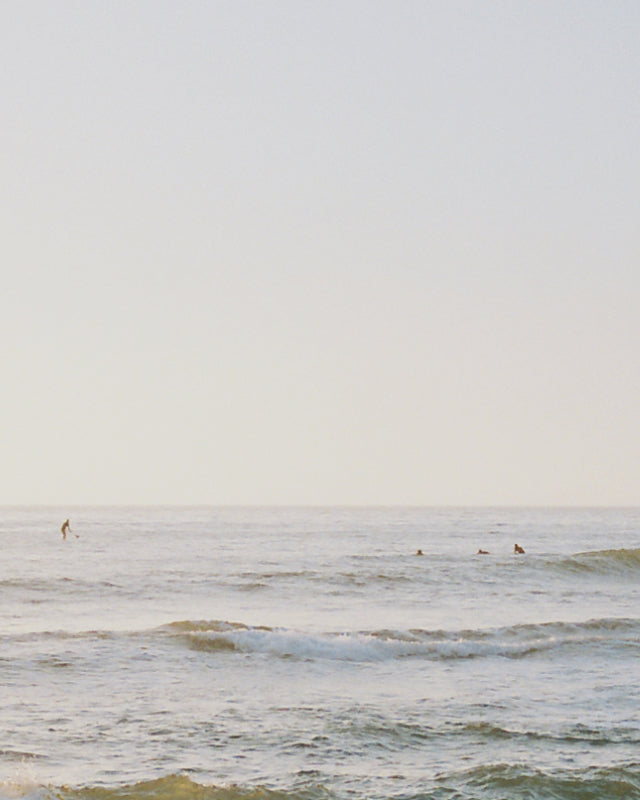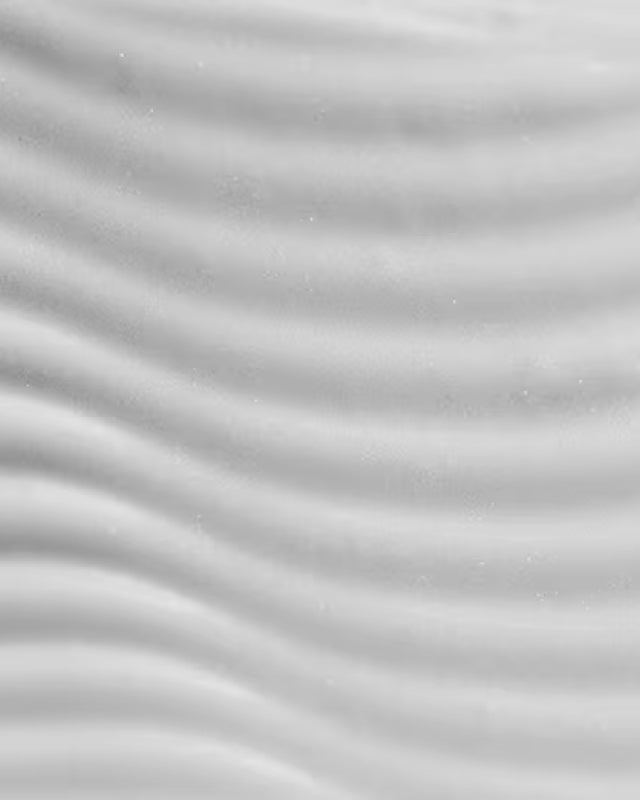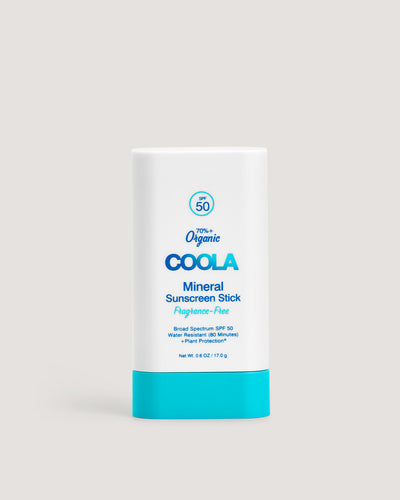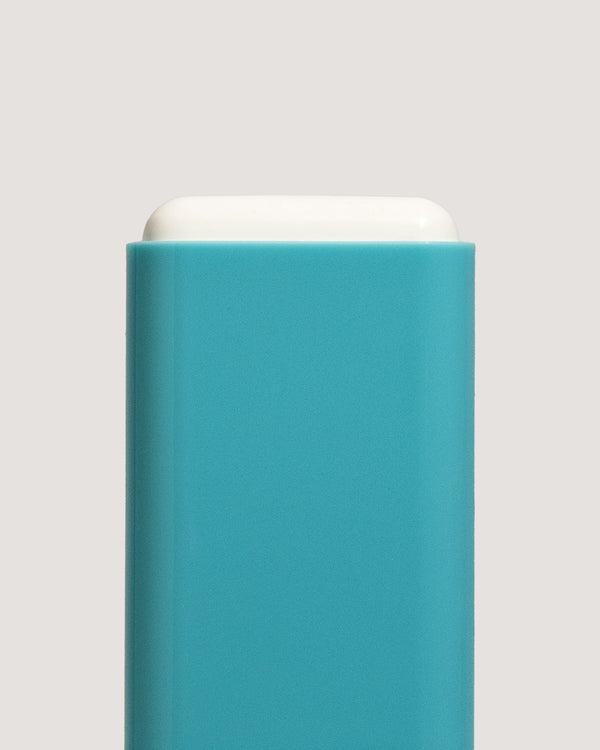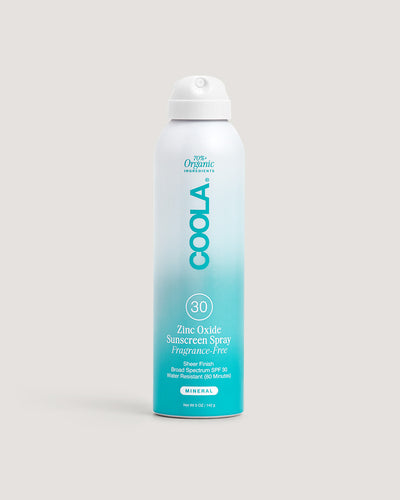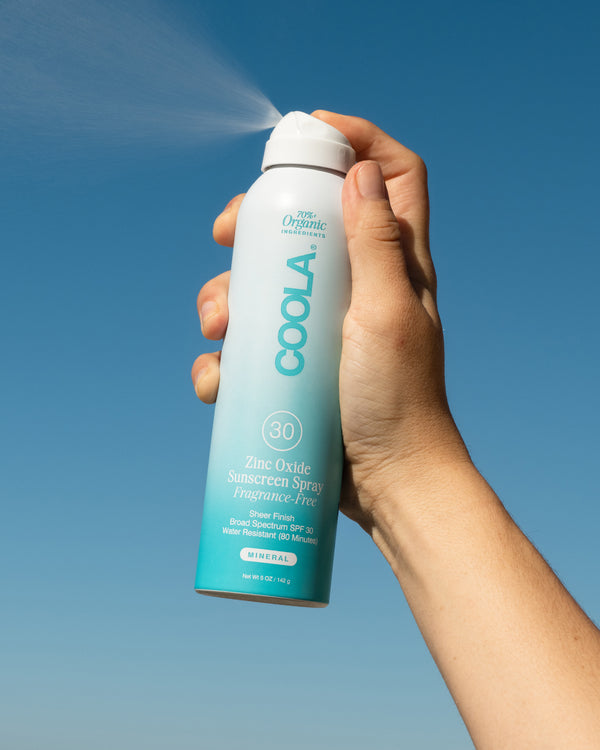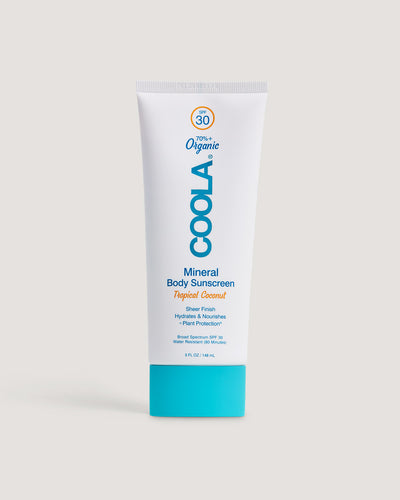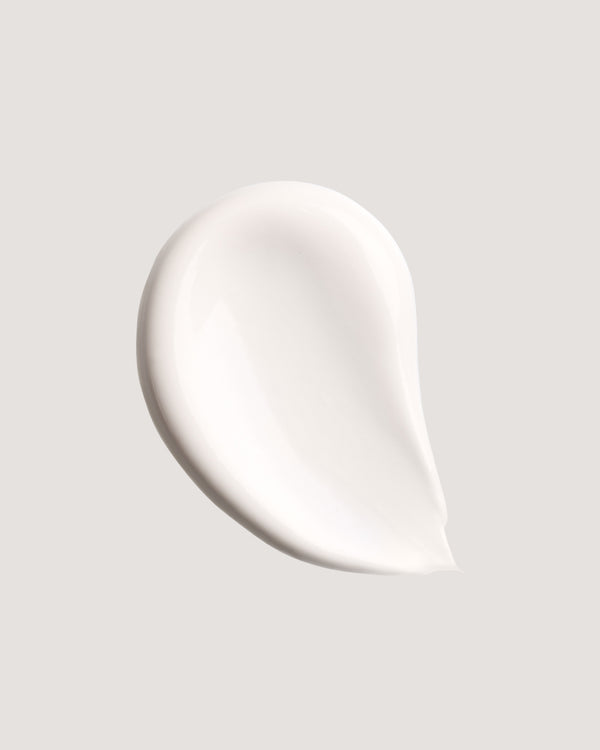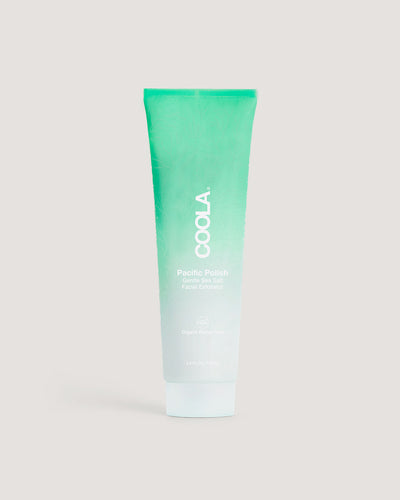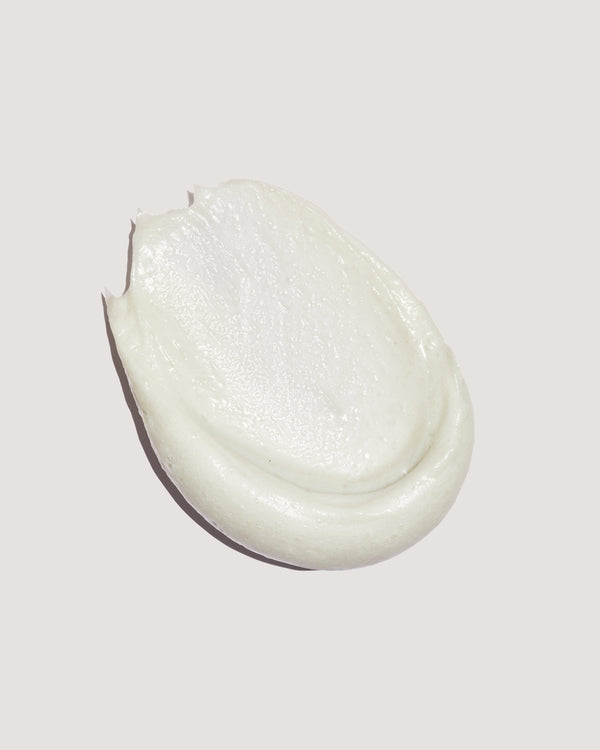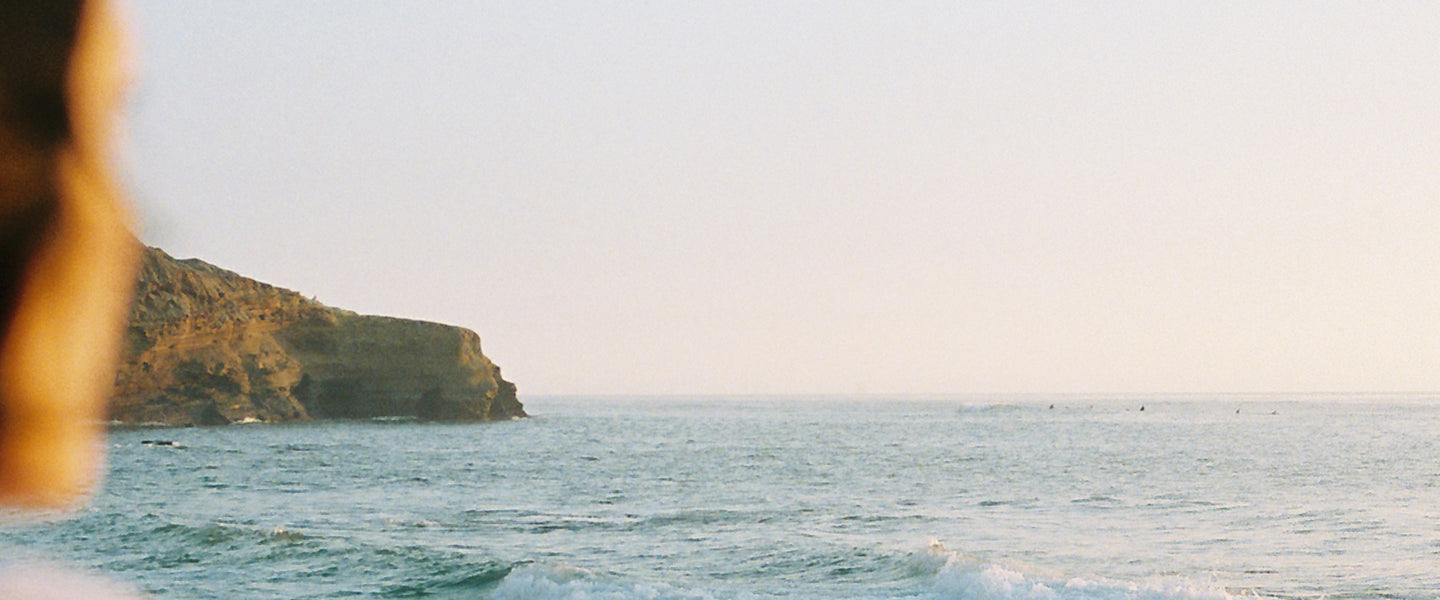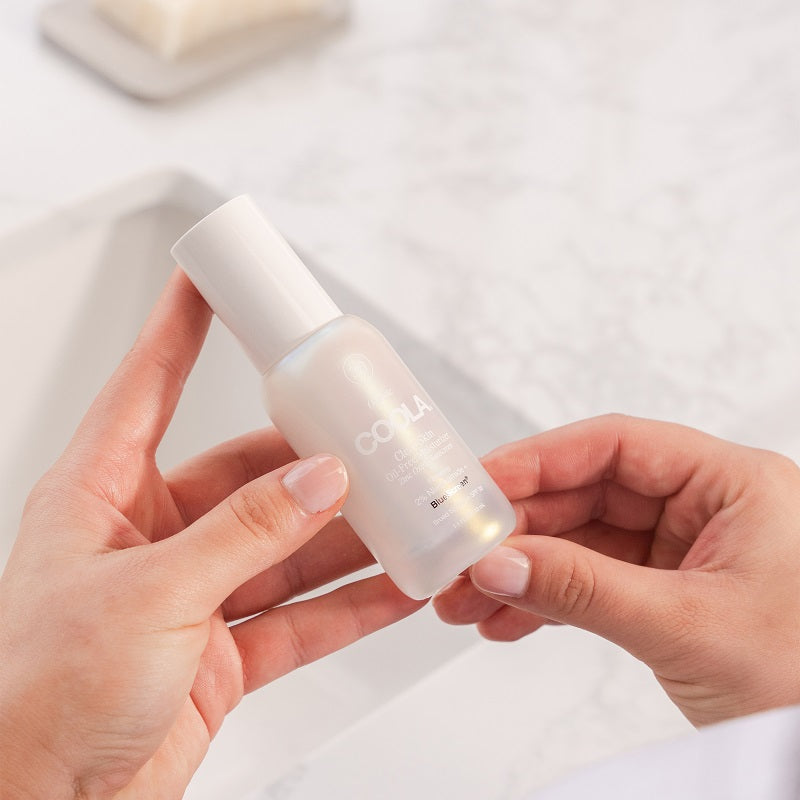
How to Remove Mineral Sunscreen
The best way to remove mineral sunscreen is to start with an oil-based cleanser to break it down, then follow with a gentle water-based cleanser to remove any remaining residue.
Sometimes, we forget to remove sunscreen properly after we’re back indoors. We apply our face sunscreen in the morning and reapply our body sunscreen throughout the day. It's easy to forget the importance of removing sunscreen properly once you're back inside and before you bathe, especially when you’ve got a busy evening of fun ahead of you.
Mineral sunscreens offer fantastic physical barriers against harmful UV rays. However, they can be notoriously stubborn to wash off. Keep reading our guide, developed by COOLA’s mineral-sunscreen lovers, to learn the best practices on how to remove mineral sunscreen. You’ll make sure your skin remains clean, healthy, and free of residue.
How To Remove Mineral Sunscreen Quickly
If you don’t have a lot of time in your day, here are some quick steps that remove mineral sunscreen effectively:
- Start with an oil-based cleanser because oil dissolves the minerals in the sunscreen better than water and soap alone.
- Emulsify with lukewarm water until you see a milky or creamy substance.
- Rinse the emulsion away until your skin is clear, usually after two or three rinses.
- Follow with a gentle water-based cleanser to remove any remaining residue, oily film, sweat, and dirt.
- Rinse with lukewarm water to prevent any sudden temperature changes to your skin.
- Pat dry to maintain as much moisture as possible.
- Apply a gentle moisturizer to prevent dryness and irritation while reinforcing your skin.
How To Remove Mineral Sunscreen From Your Face
Removing mineral sunscreen from your face follows a similar routine. Just watch out for your eyes when using cleansers. We highly recommend an oil-based cleanser that can break through a waxy or balmy mineral sunscreen stick.
Follow these steps to remove mineral sunscreen from your face:
- Massage the cleanser gently to reduce skin irritation around your face.
- Emulsify the mineral sunscreen and cleanser with lukewarm water.
- Rinse away the creamy substance with lukewarm water.
- Use a gentle, hypoallergenic water-based cleanser to remove any residue.
- Rinse your face again.
- Pat dry to prevent moisture loss.
- Gently massage in a facial moisturizer to reinforce your skin and to protect its natural defenses and moisture-holding abilities.
How To Remove Mineral Sunscreen From Your Body
Just like cleansing sunscreen from your face, the double-cleansing approach still applies. Understand that you may need to use more of your favorite cleansers. This is because you’re covering a larger surface area and you’ve likely applied thicker layers of mineral sunscreen for added protection.
Consider using a mineral sunscreen spray for efficiency if you’re short on time. Sunscreen lotions typically have more even coverage and can get to harder-to-reach areas, like along the thighs and the backs of your arms. Elevate your beach day with a lightly scented mineral sunscreen lotion SPF 30 that adds a hint of coconut without drying out your skin.
We recommend removing sunscreen from your body in segments rather than all at once. Work from the top down, like starting with your neck, then one arm, the other arm, your abdomen, your back (with a helper), one leg, and finishing with the other leg.
See these steps to learn how to remove mineral sunscreen from your body:
- Liberally apply an oil-based cleanser to cover a wider area.
- Emulsify the cleanser and sunscreen with water.
- Rinse away the emulsion with lukewarm water.
- Follow with a gentle, water-based cleanser to remove any leftover impurities, minerals, dirt, and oil.
- Rinse your skin again to finish cleansing the sunscreen.
- at dry to retain more moisture.
- Apply your favorite moisturizer to help your skin maintain its luster.
Why This Method for Cleansing Sunscreen Works
Mineral sunscreens, which usually contain zinc oxide or titanium dioxide, are designed to serve as a physical barrier against the harmful UV rays of the sun1. Their staying power, while excellent for sun protection, means they don't easily rinse off with water alone. Their resilience is outstanding when it comes to reflecting the sun’s UVA and UVB rays away from your skin. However, this means you may require a more thorough cleansing routine when cleansing sunscreen from your skin.
Oil-based cleansers dissolve the mineral layer better than ordinary water. Using our COOLA skincare products for sensitive skin as part of your routine ensures all traces of the mineral sunscreen are removed at the end of the day.
Why Is It Important To Remove Mineral Sunscreen?
Leaving mineral sunscreen on your skin for prolonged periods can lead to issues with your skin later. It's crucial not only for maintaining clear skin but also for ensuring your skin can fully benefit from nighttime repair processes.
What Happens If You Don't Wash Off Mineral Sunscreen?
Neglecting to thoroughly remove mineral sunscreen can have more consequences than just a dull complexion. It can impede your skin's ability to breathe and renew itself overnight, leading to several unwanted effects.
Here's what you might experience if cleansing sunscreen properly doesn’t happen:
- Blocked pores, which lead to breakouts.
- Interference with the skin's natural repair cycle.
- Accumulation of residue that dulls the skin’s appearance.
What Are the Basic Methods for Removing Mineral Sunscreen?
Achieving a clean, sunscreen-free face and body at the end of the day might seem daunting at first. But with the right techniques and developing a routine, it's perfectly manageable and just takes a few minutes.
Here’s how to remove mineral sunscreen effectively:
Pre-Cleansing Techniques
- Begin with lukewarm water to soften the sunscreen.
- Apply an oil-based cleanser or coconut oil to break down the sunscreen without stripping your skin’s outer layers.
The Easiest Way to Remove Mineral Sunscreen
Double cleansing the skin is the most effective way to remove mineral sunscreen completely. Start with an oil-based cleanser to dissolve the sunscreen, rinse that away, and follow with a water-based cleanser to remove any leftover residue.
Special Considerations for Sensitive Skin
- Use gentle, non-comedogenic oils for the first cleanse.
- Choose a hydrating cleanser that respects your skin’s pH for the second cleansing.
Tips for Gentle, Effective Cleansing
Use lukewarm water to prevent sudden temperature changes to your skin. Keeping skin at the right temperature keeps it strong and supple.
Exfoliate your skin one to two times per week to ensure any trapped dirt, oil, and impurities are removed. COOLA’s Pacific Polish Gentle Sea Salt Facial Exfoliator offers the perfect way to enhance your weekly skincare routine.
FAQs About Removing Mineral Sunscreen
Do I have to double cleanse every time?
Yes, you should double cleanse after a full day of wearing mineral sunscreen to fully remove it from the skin. If you only applied a light layer for a short period, a single cleanse with a gentle, non-stripping face wash may be enough.
Can regular soap remove mineral sunscreen?
Yes, regular soap can remove mineral sunscreen, but it may be too harsh and strip your skin’s natural oils. A gentle facial cleanser or oil-based cleansing balm is better for breaking down zinc oxide or titanium dioxide without causing irritation.
Are cleansers safe for sensitive skin?
Yes, cleansers can be safe for sensitive skin if they are fragrance-free, sulfate-free, and formulated with soothing ingredients like aloe vera or chamomile. Look for gentle, non-foaming formulas that cleanse effectively without disrupting the skin barrier.
How do I get sunscreen out of my eyes?
If sunscreen gets in your eyes, rinse them gently with lukewarm water for at least 15 seconds. Avoid rubbing, as this can cause more irritation. Use a clean towel to pat the area dry, and see a doctor if discomfort persists.
Is zinc oxide sunscreen better than traditional chemical sunscreens?
Zinc oxide sunscreen offers broad-spectrum protection by reflecting both UVA and UVB rays. Unlike some chemical filters, zinc oxide is mineral-based and gentle on skin, making it a good choice for sensitive skin types and suitable for daily sun care.
Does sunscreen help acne?
Yes, sunscreen can help with acne by preventing UV damage and post-inflammatory hyperpigmentation. Choose a non-comedogenic, oil-free formula designed for acne-prone skin to avoid clogging pores while still getting effective broad-spectrum sun protection.
Skincare Routine After Removing Sunscreen
After successfully removing sunscreen, replenish your skin with products that support repair and rejuvenation:
- Apply a hydrating toner to balance the skin’s pH.
- Use a serum rich in Vitamin C to combat any free radical damage and support collagen production.
- Moisturize with a product designed for your skin type to lock in hydration.
- Consider using a lightweight, non-comedogenic oil to reinforce the skin's barrier overnight.
Why Choose COOLA for Your Sun Care Needs?
COOLA offers a range of mineral sunscreens that do more than just protect against harmful UV rays. They’re formulated with your skin’s health in mind. Our products, from tinted to non-tinted options, cater to every skin type, including sensitive skin and acne-prone skin.
We offer powerful sun protection that's also easy to remove, thanks to our commitment to gentle, skin-loving ingredients. And when it comes time to replace your sunscreen, remembering how long sunscreen lasts is as crucial as the protection it offers, ensuring you're always shielded with the freshest, most innovative formulas.
Remember, the goal is to protect your skin from the sun during the day and from potential irritants at night. With COOLA's range of suncare products, you're equipped with everything you need for comprehensive sun protection and easy removal to keep your skin glowing and guarded against aging and skin cancer risks.
Sources:
- Smijs TG, Pavel S. Titanium dioxide and zinc oxide nanoparticles in sunscreens: Focus on their safety and effectiveness. Nanotechnol Sci Appl. 2011;4:95–112. https://pubmed.ncbi.nlm.nih.gov/24198489/

